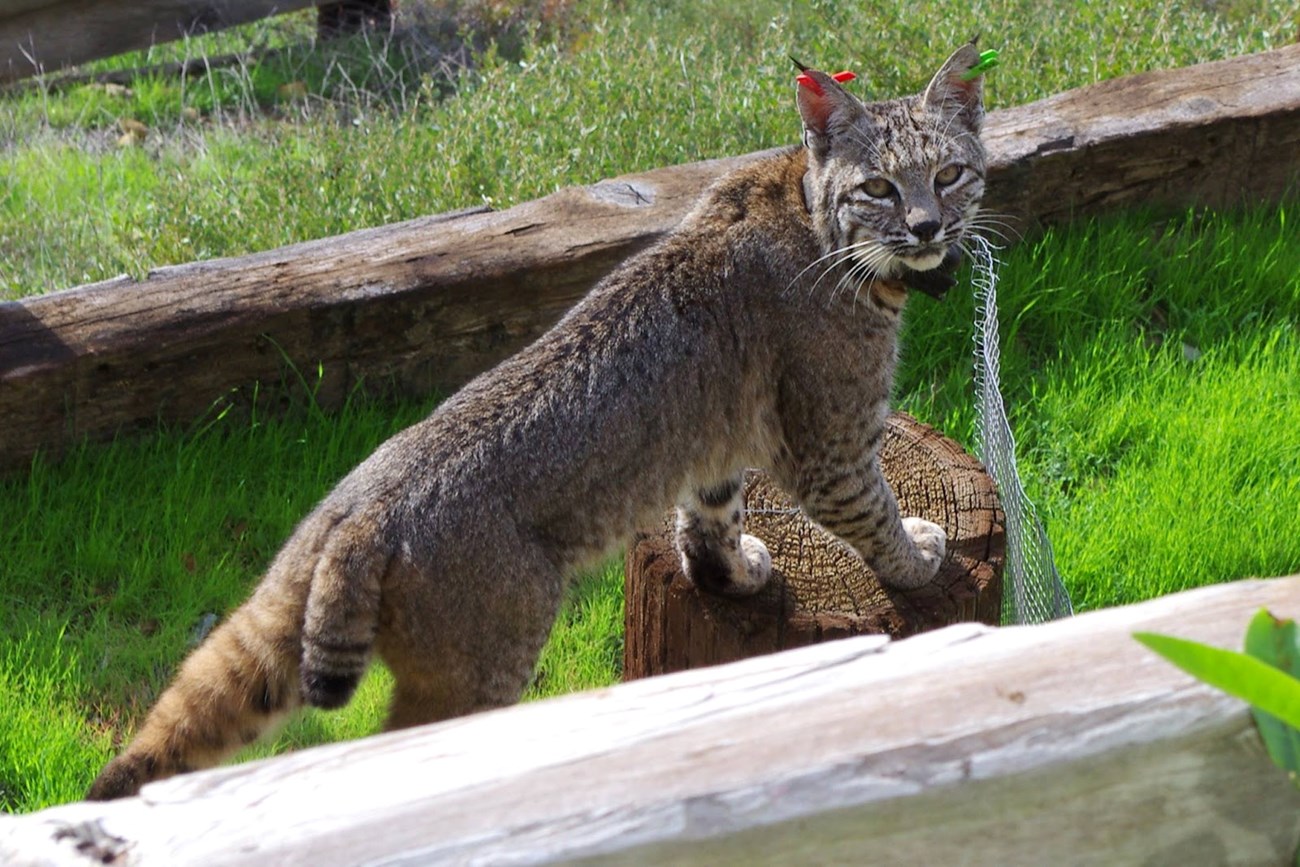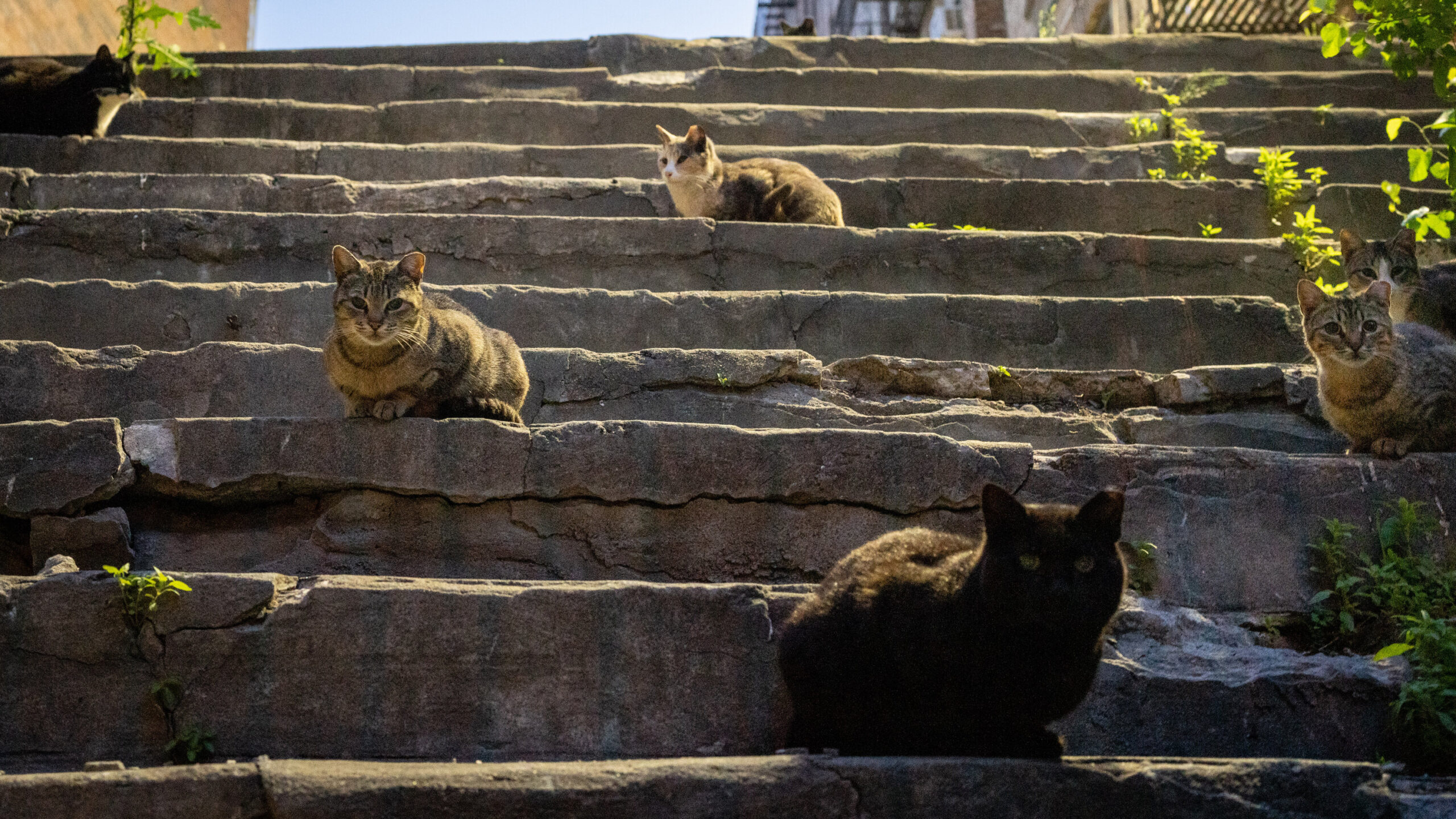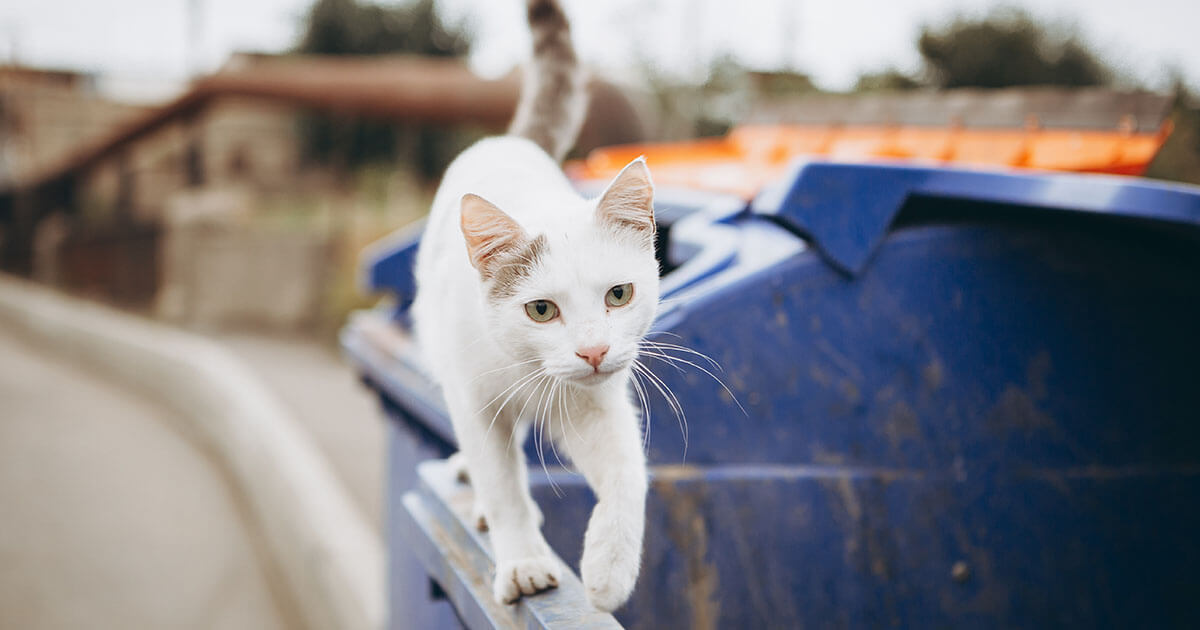Stray cats often reside in urban alleys, abandoned buildings, and occasionally in rural barns. They seek out areas that provide shelter and a food source.
Stray cats, known for their resilience, are a common sight in many neighborhoods. These felines tend to find homes in places that offer them security and access to food, such as backstreets, derelict structures, or even under porches. With survival skills honed by their environment, they are adept at navigating the nooks and crannies of the human world.
Community members sometimes offer support through feeding and makeshift shelters, which can become hot spots for stray gatherings. Despite their rough living conditions, stray cats play a role in the urban ecosystem, often keeping rodent populations in check. Their presence highlights the broader issue of animal welfare and the need for humane management strategies, including trap-neuter-return (TNR) programs, which aim to control and care for these independent animals.

Credit: www.nps.gov
Stray Cat Colonies In The Concrete Jungle
Stray Cat Colonies in the Concrete Jungle echo the resilience and adaptability of these feline inhabitants. In bustling cities, you’ll find clusters of stray cats, forging lives in the nooks and crannies of our urban landscape. These colonies represent a community. Here, street-wise cats live together, forming complex social structures within their concrete territory.
Territorial Havens In The City
Stray cats often seek out specific areas where they can establish a safe zone. This zone includes places where food sources and warm shelters are accessible. In these territories, cats display intricate behaviors to communicate boundaries and coexist with their colony members. Such areas often have lower traffic and quieter surroundings, providing an ideal setting for strays to thrive.
Typical Hideouts And Improvised Shelters
Strays are masters of disguise and comfort. They find solace in a myriad of hideouts within the urban environment. Here are some common refuge spots:
- Abandoned spaces: Untouched areas that humans no longer occupy
- Alleys and backstreets: Protected from the main hustle of the city
- Dumpsters: Sources for leftover food and warmth
- Sheds and garages: Offer shelter without heavy foot traffic
Their shelters may also include improvised materials like:
- Cardboard boxes: Easy to find and assemble into cozy beds
- Old furniture: Found objects that double as safe sleeping spots
- Ingenious hiding spots: Creative areas cats claim to protect themselves
- Tree cavities: Natural shelters in city parks

Credit: www.nytimes.com
The Hunt For Food And Water
For stray cats, survival depends on food and water. These feline adventurers roam our cities and countryside, mastering the art of finding sustenance. The hunt is a daily challenge. Yet, they often succeed through smart tactics and a little help from human society.
Scavenging Tactics In Urban Landscapes
Stray cats are experts in urban survival. They turn cityscapes into hunting grounds. They look for food day and night.
- Sharp senses help them locate meals.
- Night vision allows them to hunt in the dark.
- Stealthy movements keep them safe from predators.
They check dumpsters and alleys for scraps. Cats often wait near restaurants after closing. They know this is a good time to find food.
Reliance On Human Generosity And Waste
Stray cats also depend on humans. Many people leave food and water just for them. However, they also survive on what we throw away.
- Leftovers in garbage bins are a common food source.
- Some cats visit homes that feed pets outside.
- Community feeding stations can be a safe place for regular meals.
Cats adapt to local resources. This helps them thrive even in tough environments.
Navigating Perils: Traffic, Predators, And People
Stray cats are experts in survival, but urban landscapes pose serious threats. They navigate a world full of dangers, from racing cars to natural predators. Even human contact can be unpredictable. Here’s how stray cats manage these challenges.
Risk Avoidance Strategies
Stray cats often display incredible ingenuity in avoiding dangers. Let’s delve into their survival playbook:
- Stealth and Speed: Cats move quietly and swiftly to dodge threats.
- Nocturnal Habits: They roam at night, when fewer cars are on the roads.
- High Places: Trees and ledges offer safety from ground predators.
- Hiding Spots: They find secret spaces, like underbrush or abandoned buildings, to escape danger.
Interactions With Humans: Friend Or Foe?
Human interactions can be a double-edged sword for stray cats. Friendly locals may provide food and shelter, whereas others can be harmful. Here’s what shapes their relationships:
| Human Approach | Cat’s Response |
|---|---|
| Feeding | Trust and approachability grow |
| Ignoring | Cautious observation from afar |
| Threatening | Escape or avoid in the future |
Health And Well-being Outside A Home
Stray cats face many challenges living outdoors. They must find food, shelter, and avoid dangers that don’t exist for indoor cats. One major concern for strays is their health and well-being. Without the care provided in a loving home, they are at higher risk for several issues. Let’s explore some common health risks and how community efforts can improve the lives of these feline friends.
Common Illnesses And Injuries
Outdoor life exposes stray cats to various illnesses and injuries. They can get sick from other animals, dirty environments, or lack of food. They may also get hurt in fights with other animals. Here are some of the most common problems:
- Upper respiratory infections – A cold can make strays very sick.
- Feline leukemia (FeLV) – A serious disease that affects their immune system.
- Fleas and ticks – They cause discomfort and can spread diseases.
- Wounds from fights – These can get infected without treatment.
- Malnutrition – Strays may not get enough food for good health.
The Role Of Community Spay/neuter Initiatives
One way to help strays is through spay/neuter programs. These initiatives help control the stray population. Fewer strays mean fewer cats competing for food and shelter. It also leads to fewer cat fights and injuries. Here’s how community programs can make a difference:
| Benefit | Explanation |
|---|---|
| Reduces overpopulation | Less cats mean more resources for each. |
| Decreases spread of disease | With fewer cats, there’s less chance of illness spreading. |
| Lowers injury rates | Fixed cats fight less, leading to fewer injuries. |
| Increases overall health | Sterilized cats live healthier, longer lives. |
Such programs need community support. They rely on donations, volunteers, and awareness. When people understand the importance of spaying and neutering, they can help improve the lives of stray cats.
Feline Social Structure And Communication
Stray cats live intriguing lives, often misunderstood by humans. Within their world, a complex social structure exists. They rely on communication skills to navigate their environment. Let’s delve into the lives of stray cats and unveil how they organize and interact within their groups.
The Dynamics Of Stray Cat Groups
Stray cats often form groups known as colonies. Not all stray cats join these groups. But when they do, each cat has a role. Colonies offer protection and increased access to food.
- Female cats look after their young together.
- Territory is key for access to resources.
- A hierarchy is often established.
The size of a colony can vary widely. It often depends on food and shelter availability. Better resources lead to larger groups.
Vocal And Non-vocal Signals In Daily Survival
Communication among stray cats is vital for their survival. It can be vocal or non-vocal.
| Vocal Signals | Non-Vocal Signals |
|---|---|
| Meowing for attention | Tail position shows mood |
| Hissing indicates fear or aggression | Ear orientation signals interest or anger |
| Purring signifies comfort | Body posture can express submissiveness or dominance |
These signals are not just for communication within groups. They can deter potential threats or attract mates. Non-verbal cues often dictate the dynamic of their interaction before a vocalization has to be made.

Credit: en.wikipedia.org
The Bond With Human Society
Stray cats often find shelter in our bustling cities and quiet neighborhoods. These felines navigate a world shaped by humans, sometimes forming unique bonds with the community. People offer food, shelter, and affection, bridging the gap between wilderness and civilization. This dynamic lays the foundation for heartwarming stories of adoption and rescue operations, along with fostering relationships that benefit both humans and cats.
Adoption Tales And Rescue Operations
Heartfelt stories of stray cat adoptions continue to touch lives. Individuals and families welcome these felines into their homes, creating tales of kindness. Rescue organizations play a key role, ensuring that strays find their forever homes. They host adoption fairs, share stories on social media, and tirelessly work to make a difference for these animals.
Successful rescues often start with alert citizens. They notice stray cats in need and contact local rescues. From there, the stories unfold:
- Cats receive medical care and rehabilitation.
- Cats learn to trust humans again in a safe environment.
- New families meet their furry friends through adoption drives.
Each rescue effort cements the bond between humans and stray cats, showcasing the positive impact of empathy.
Fostering Community-cat Relations
Communities play a pivotal role in fostering relations with stray cats. Neighborhood initiatives, such as Trap-Neuter-Return (TNR) programs, help manage stray cat populations humanely.
| Community Initiatives | Benefits |
|---|---|
| TNR Programs | Control cat populations, improve health. |
| Feeding Stations | Provide sustenance, build trust. |
| Shelters | Offer safety, protection from elements. |
Informative workshops and flyers educate the public about caring for community cats. Through these actions, humans and strays form a synergistic relationship that enhances the neighborhood.
Local cat cafés sometimes partner with rescues. They allow people to interact with stray cats in a cozy setting. These interactions often lead to adoptions and foster agreements. They also highlight the importance of stray cat welfare in our society.
Frequently Asked Questions For Where Do Stray Cat Live
Where Are Most Stray Cats Found?
Most stray cats are typically found in urban areas, often around neighborhoods, alleys, and abandoned buildings where food and shelter sources are abundant.
Where Do Stray Cats Stay During The Day?
Stray cats often seek shelter in quiet, undisturbed places during the day, such as abandoned buildings, dense foliage, or under structures like decks and porches. They favor spots that offer protection from predators and harsh weather conditions.
Where Do Stray Cats Usually Sleep?
Stray cats often seek shelter in quiet, secluded areas such as under cars, in abandoned buildings, or within dense foliage. They prefer spots that provide protection from weather and threats.
How Long Can A Cat Survive As A Stray?
A stray cat can survive for several years with varying lifespans based on factors like food access and environmental hazards.
Conclusion
Stray cats often find shelter in abandoned buildings, under porches, and within dense foliage. They adapt to urban and rural landscapes to survive. Supporting local animal shelters can help these creatures find better homes. Remember, stray cats are resilient and resourceful, thriving in varied environments with community compassion.

